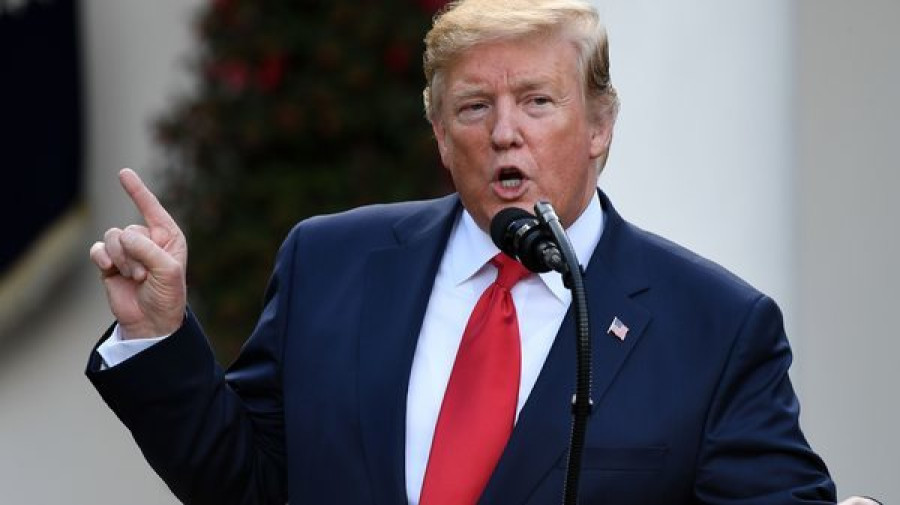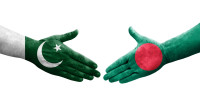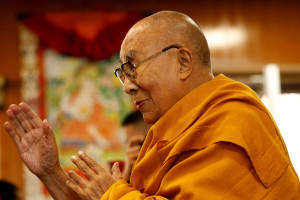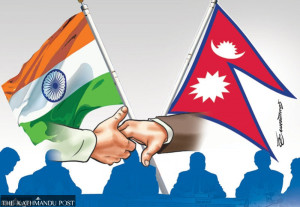Columns
Hate and its shadow
Like the young men attracted to extremist ideology in Pakistan, America’s terrorists are young white men who seem unsure of their direction in life.
Rafia Zakaria
By the time the weekend ended, it was the deadliest the United States had ever seen. Around 10am on Saturday morning, as parents took excited children to Walmart ready to buy school supplies (the official school year in the US begins in late August or early September), a gunman opened fire, first in the parking lot and then inside Walmart itself. As his manifesto, uploaded before the attack, revealed, he knew how to strike a ‘soft target’ (Walmart stores are cavernous, large and without any real security or police presence) and he was rebelling against the Hispanic ‘invasion’ of the US.
Nor was that enough during America’s weekend of terror. Across the country in Dayton, Ohio, hundreds of people milled around a bar in a district known for its nightlife. After one in the morning, a white man in his early 20s, armed with hundreds of rounds of explosives, opened fire on people on the street before trying to get into the bar itself. In about 30 dreadful seconds, he shot nine people and injured 15. After 30 seconds, police in the area responded and shot him. One of the dead was his own sister, a fact that has particularly baffled those who have been investigating the matter.
It is odd to see Americans go through what Pakistanis have already endured. The memory of the dark winter day when the Army Public School was attacked, leaving young bodies and exercise books littered all over the place, is one that continues to haunt the country. Then there were the losses of so many valiant leaders, from Benazir Bhutto and Salmaan Taseer to many more who had to contend with the same sort of extremism, albeit presented in religious garb. Many weekends of mourning and of certainty, of blocked mobile phone signals and banned YouTube, postponed wedding celebrations, cancelled exams and so much more, came with the fight against the Pakistani Taliban.
Another less discussed consequence also accompanied Pakistan’s ‘war on terror’. ‘Pakhtun’ became conflated with ‘terrorist’, freedom of speech began to be considered pointless, and religion was elevated as not simply the central but the only aspect of meaning in life. In fighting the Taliban, Pakistanis—as if to reclaim their beliefs from the Taliban’s barbarism—became more ‘pious’, began to enact stricter judgements on neighbours and family members who did not pray or did not fast, or did not in their view make sufficient shows of piety. Even as the Taliban began to be relegated to the peripheries.
If the Taliban objected to men and women studying together at university, vigilante student groups operating on Pakistani campuses today carry forward their legacy. If they wanted women to be completely covered in public places, it has become the rule in most of the country, save the tony areas of Karachi and Lahore.
The central point of drawing these comparisons is simply to illustrate that in fighting militancy, some terror, some of its language, some of its techniques, its penchant for dogma, for a lack of tolerance, for the flagrant showing off of piety, has all stuck with Pakistan. This shadow of terror is harder to fight, to isolate and to condemn.
Countries like Pakistan, post-colonial countries, are continually (and incorrectly) often seen as inhabiting the Western past. This is of course a colonial frame, where the West is always ahead and the rest are always gasping to catch up. In this case, however, Pakistan has something useful to say to the Americans. In the American fight against white supremacy, the language of race and the tribalism of cliques based on skin colour are both going to make their home within a generation’s imagination. The inanity of mass violence, the sheer inhumanity of it, will seep into their bones and harden then in ways that only those stricken with grief—the large inchoate sadness of a collective rather than individual sadness—can understand.
It is clear that the US is on the cusp of a race war. The ‘war on terror’ that it imposed on others, that it used to justify the killing of hundreds of thousands of people, has now turned inwards and is greedily claiming American lives. So deep is the division that the two sides have become calcified in their positions; the white supremacists see everyone who is not white and even those whites who are not white supremacists, as a threat, as unpatriotic and (at least for a murderous few) worthy of being killed. Those committed to tolerance and racial harmony watch aghast, unable to react in time, unable to accept that people they have known can transform so suddenly, so unexpectedly, into racist monsters.
Like the young men attracted to extremist religious ideology in Pakistan, America’s terrorists are young white men who seem unsure of their direction in life, left out of the artificial intelligence and automation-led economy in which immigrants and others seem to thrive. They have support from the top: President Donald Trump has been lauded by white supremacists that celebrate his every racist remark, and feel that he is entirely in step with their project of making America a white country.
Their zeal, their inability to feel any compassion for their victims, their failure to see through their own ragged logic, are reminiscent of the characteristics of the extremist mindset that Pakistanis know well. The Trump administration’s inability to act, its shadow support for those known to have racist and white supremacist views, are like Pakistani administrations past that seemed not quite sure, or were wilfully blind to the danger posed by extremists.
This week Pakistan is mired in its own crisis and is hardly in a position to offer up advice. In its own moment of uncertainty, as it confronts the evil imposed on innocent Kashmiris by an overreaching Indian state, it can take some comfort in the knowledge that those who perpetuate evil eventually become tainted with it themselves.
This article was previously published in Dawn, a part of the Asia News Network.
***
What do you think?
Dear reader, we’d like to hear from you. We regularly publish letters to the editor on contemporary issues or direct responses to something the Post has recently published. Please send your letters to [email protected] with "Letter to the Editor" in the subject line. Please include your name, location, and a contact address so one of our editors can reach out to you.




 14.12°C Kathmandu
14.12°C Kathmandu















